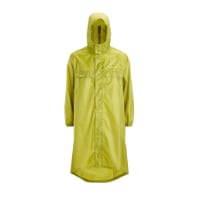Camino2014
Pilgrim
- Time of past OR future Camino
- Piémont, Frances, Littoral, Norte, Ingles (completed) Baztan, St. Jaume, Portuguese (planned!)
Hi all,
I've been reading a lot about how crowded the Way is getting in recent years, with new material and new guidebooks coming out all the time which is feeding the interests of many different types of people. While for many the point of El Camino is to meet new people from all over the world, personally I am looking for an introspective, personal type of pilgrimage where I can reflect on myself. A good way (so I've heard) to avoid the crowds is to go in between John Brierley's stages.
Unfortunately, many of Brierley's daily destinations are destinations for a reason: ample amenities, cultural treasures, etc etc... I don't want to miss out on experiencing these towns, but more importantly (in my opinion) I don't want to have to compete with the so-called "5 O'Clock Brigade" for a bed!!!
So I'm wondering: if any of you have gone "in between", which towns have been your most favorite and why? Where would you recommend I stay? Or, even better, can you give me a copy of your itinerary??
Thanks!
I've been reading a lot about how crowded the Way is getting in recent years, with new material and new guidebooks coming out all the time which is feeding the interests of many different types of people. While for many the point of El Camino is to meet new people from all over the world, personally I am looking for an introspective, personal type of pilgrimage where I can reflect on myself. A good way (so I've heard) to avoid the crowds is to go in between John Brierley's stages.
Unfortunately, many of Brierley's daily destinations are destinations for a reason: ample amenities, cultural treasures, etc etc... I don't want to miss out on experiencing these towns, but more importantly (in my opinion) I don't want to have to compete with the so-called "5 O'Clock Brigade" for a bed!!!
So I'm wondering: if any of you have gone "in between", which towns have been your most favorite and why? Where would you recommend I stay? Or, even better, can you give me a copy of your itinerary??
Thanks!
















